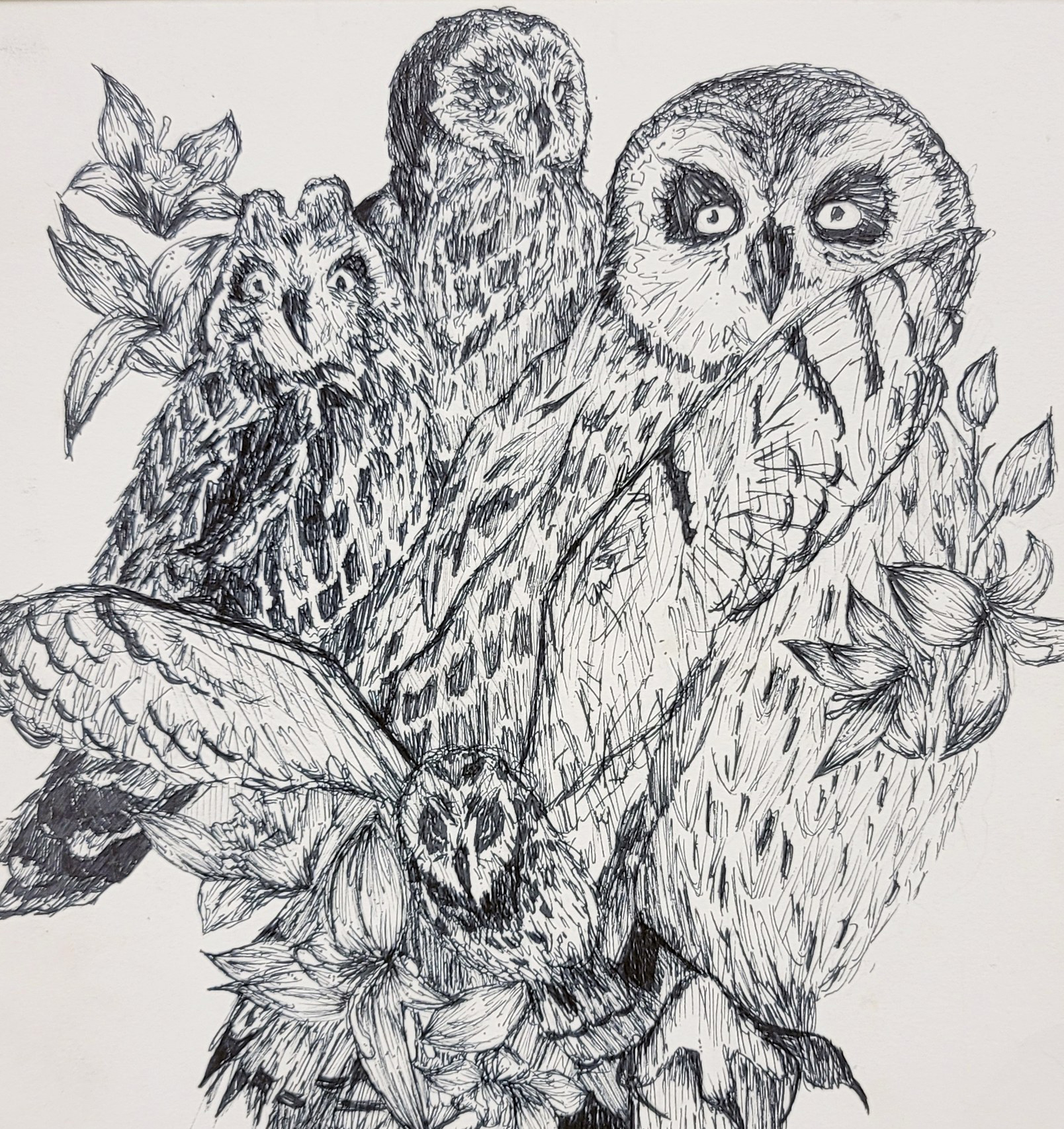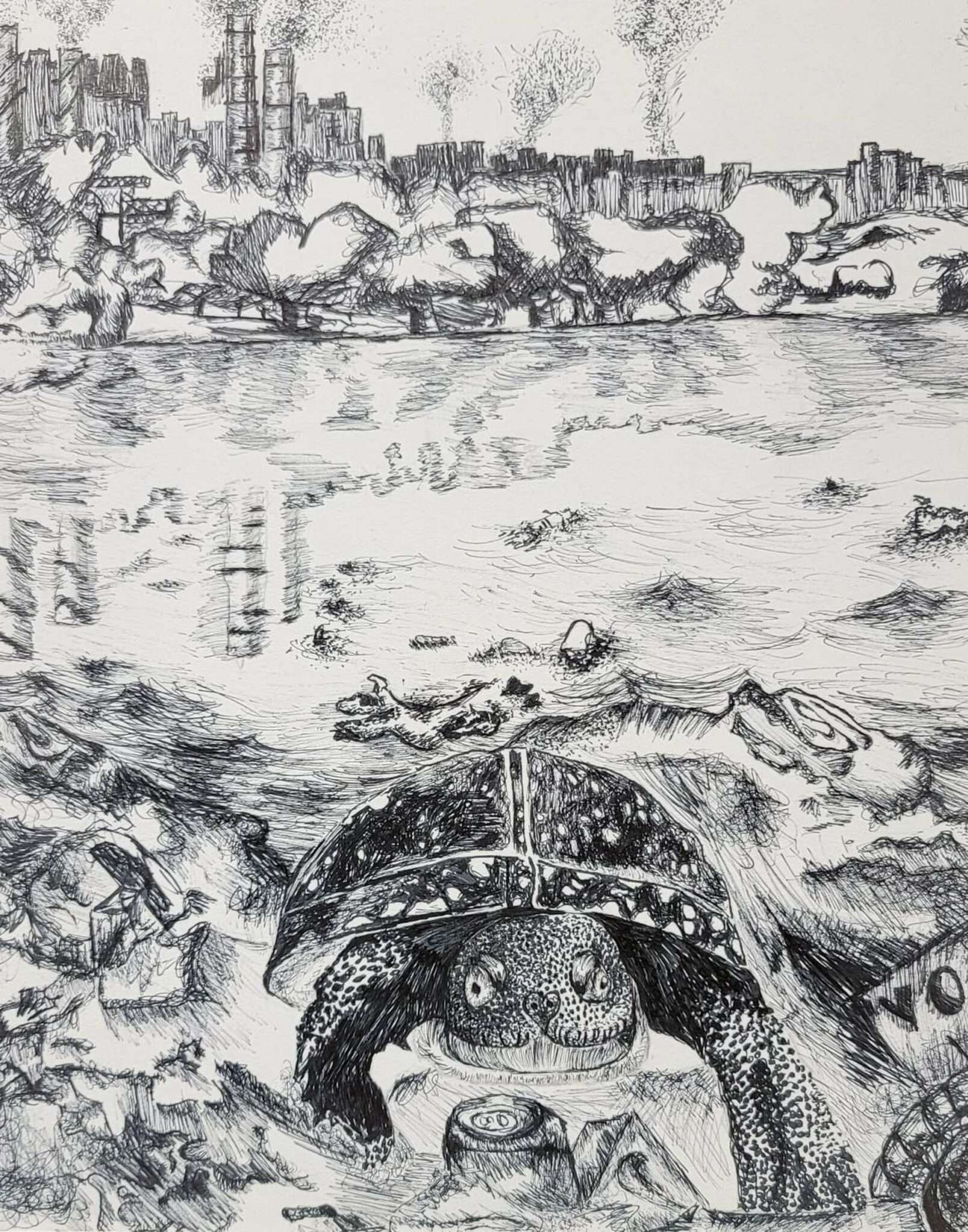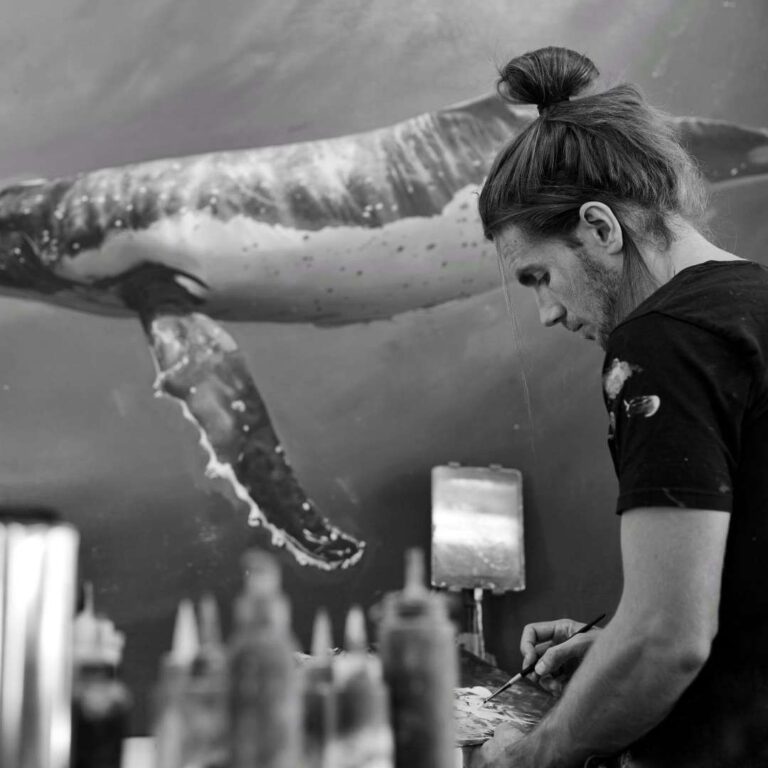Grade Level
9-10, 11-12Duration
15 days- Block Schedule 73 min long class periods
Materials
12 x 15-inch paper, Prismacolor ink pens, computers or iPads with access to Photoshop or comparable programs, printer
Media
Pen and Ink
Lesson Objectives
Main Objective
For the student to:
- Create an Ink drawing about animal conservation locally.
Secondary objectives:
- Examine the art of Alfred Basha and Sonny Behan.
- Investigate how artists can make a difference (specifically conservation efforts).
- Use adobe photoshop to create a composition.
- Transfer design to paper.
- Practice ink techniques.
- Use ink techniques to create your design on your paper.
- Critique, Revise, and reflect on their artwork
Essential Questions:
- What conditions, attitudes, and behaviors support creativity and innovative thinking?
- What factors prevent or encourage people to take creative risks?
- How does collaboration expand the creative process?
- How does engaging in creating art enrich people’s lives?
- How does making art attune people to their surroundings?
- How do people contribute to awareness and understanding of their lives and the lives of their communities through art-making?
Introductory Activity
Use these two thought-provoking questions to jump-start conversation. What is Animal/Wildlife Conservation? What does that mean in your state specifically?
Examine the art of Alfred Basha. Students will be shown images from this artist and we will discuss their possible meanings through Think-Pair-Share activity between partners. After the conversation, students will share their ideas from their tables (Groups of 4) before sharing them with the class.
Next, students Investigate Wildlife Conservation and answer What is animal conservation? Watch a Ted-Talk video on Animal Conservation (find a link in resources).
Next, examine how artists can help Animal Conservation. Examine the work of artist Sonny Behan and have students independently work on a worksheet on Sonny Behan (See link in resources).
Students will then read and research Conservation Efforts in their state. This can be done in partners or independently. The eventual goal is for students to create a work of art that shows either how we can conserve wildlife or what is threatening wildlife.
Lesson Process
- Brainstorm Wildlife Conservation imagery
- Create a design in Adobe Photoshop using multiple images. Your design should represent Animal Conservation in some way.
- Transfer your design to your drawing board.
- Learn Ink/Marker Shading Techniques: Hatching, Cross-hatching, Scumbling, Stippling
- Use your techniques to complete your drawing.
Vocabulary
value, wildlife conservation, composite, cross-hatching, scumbling, stippling, social justice artResources
Teacher presentation for Wild Life Conservation Pen and Ink Composite Drawings
Artist investigation Worksheet: Sonny Behan
Alfred Basha
Ted-Talk video on Animal Conservation
Rubric for Wildlife Conservation Pen and Ink Composite Drawings
Author & Website/Blog
Libby McArthur












